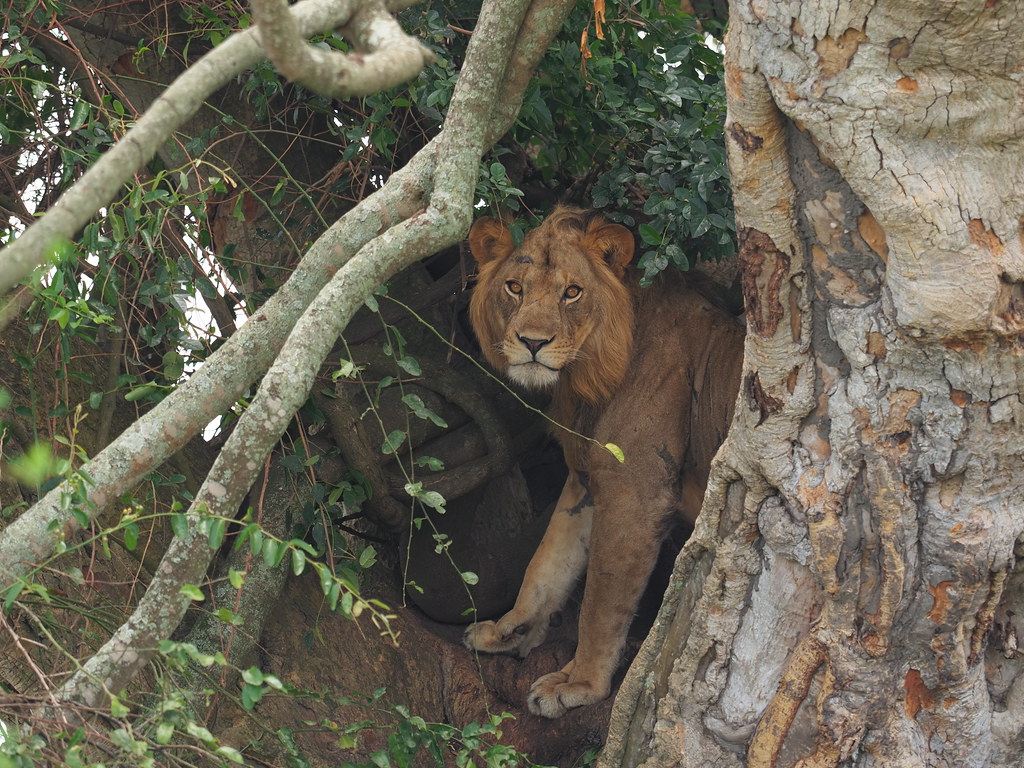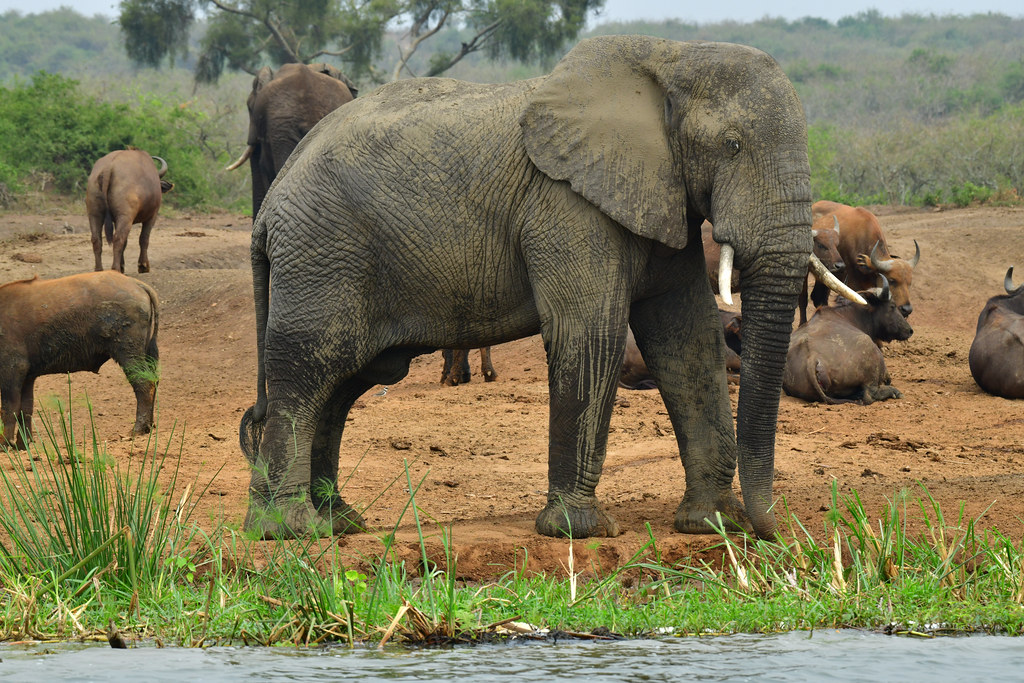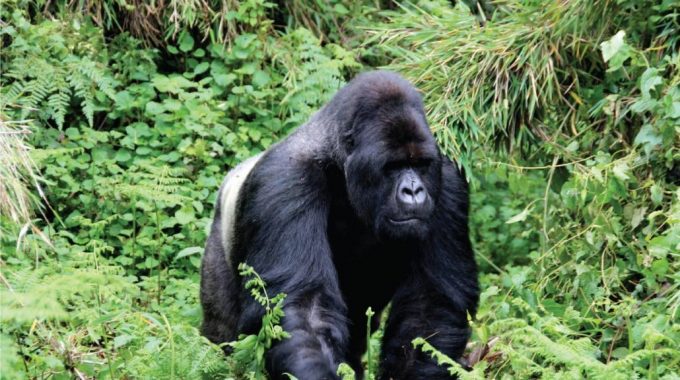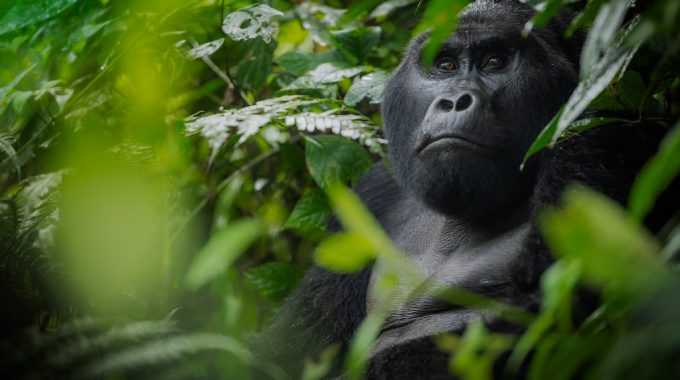Mountain Gorilla trekking in Uganda is famously and best done in Bwindi impenetrable forest national…
2024 – 2027 Queen Elizabeth National Park: A Jewel of Uganda
2024 – 2027 Queen Elizabeth National Park: A Jewel of Uganda — Introduction
Queen Elizabeth National Park, situated in the western region of Uganda, is one of the country’s most iconic and biodiverse protected areas. Established in 1952 and named after Queen Elizabeth II, the park spans an impressive 1,978 square kilometers. This extensive landscape is characterized by its rich tapestry of ecosystems, including savannas, wetlands, forests, and lakes, making it a haven for wildlife and a magnet for tourists from around the globe.
Geographic and Ecological Diversity
The park’s location within the Albertine Rift Valley, flanked by the Rwenzori Mountains to the north and the Virunga Mountains to the south, contributes to its diverse habitats. The varied topography and climate conditions create a mosaic of environments that support a wide range of flora and fauna.
The major geographical features include:
Kazinga Channel: This natural waterway connects Lake George and Lake Edward, providing a crucial habitat for hippos, crocodiles, and a plethora of bird species. The channel is renowned for its boat safaris, offering close-up views of the wildlife.
Mweya Peninsula: Situated within the park, it is a focal point for tourists, offering panoramic views and access to the Kazinga Channel.
Kyambura Gorge: Often referred to as the “Valley of Apes,” this lush gorge is famous for its chimpanzee tracking opportunities.
Maramagambo Forest: A dense tropical rainforest that harbors numerous bird species, primates, and the famous Bat Caves.
Biodiversity
Queen Elizabeth National Park is home to over 95 mammal species and more than 600 bird species, making it one of the most biodiverse national parks in the world. Key species include:
Mammals: The park hosts elephants, lions, leopards, buffaloes, and antelopes. Notably, the Ishasha sector is famous for its tree-climbing lions, a rare phenomenon that attracts wildlife enthusiasts.
Birds: Birdwatchers flock to the park to observe species such as the African Fish Eagle, the Shoebill Stork, and numerous migratory birds that seasonally inhabit the park’s wetlands.
Primates: Besides chimpanzees in Kyambura Gorge, the park also shelters other primates such as baboons and various monkey species.
Conservation and Community Involvement
Conservation efforts in Queen Elizabeth National Park focus on mitigating human-wildlife conflicts, protecting endangered species, and promoting sustainable tourism. The Uganda Wildlife Authority (UWA) collaborates with local communities to ensure that conservation initiatives benefit both wildlife and people.
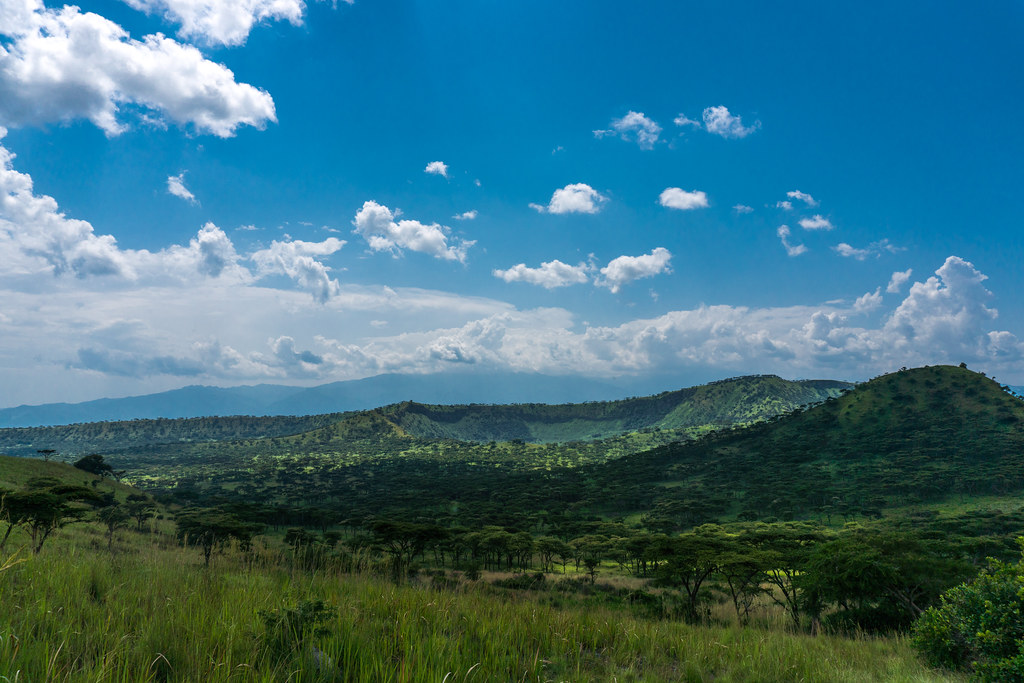
Programs include:
Community Tourism Initiatives: These involve local people in tourism activities, providing them with income and fostering a sense of ownership and responsibility towards wildlife conservation.
Anti-Poaching Measures: Park rangers and conservationists work tirelessly to combat poaching, using advanced technology and community informants to protect vulnerable species.
Habitat Restoration: Efforts are made to restore degraded habitats, particularly wetlands and forests, to support the park’s ecological balance.
Tourism and Economic Impact
Tourism is a vital economic driver for the region surrounding Queen Elizabeth National Park. The park offers a wide range of activities for visitors, including:
Game Drives: Safaris through the park’s diverse landscapes provide thrilling encounters with wildlife. The park offers early morning game drives, evening game drives, perfect time for game watching when the animals are most active and sun is not scorchy. As well as Night game drives best for Nocturnal viewing and predator viewing as they hunt for prey.
Boat Safaris: These trips along the Kazinga Channel offer unique perspectives on aquatic life and bird watching. Kazinga channel harbors the biggest population of hippos referred to as the school of hippos and several other animals along the shores.
Chimpanzee Tracking: Guided treks in Kyambura Gorge provide intimate experiences with one of our closest relatives. Chimpanzee trekking involves walking in the forest in search for the habituated chimps’ groups and once you have found the, you will be allowed one hour with them as you watch them play, breast feed young ones, groom, building nets among other daily activities.
Cultural Tours: Visitors can engage with local communities, learning about traditional ways of life and participating in cultural performances like traditional dances among others. The revenue generated from tourism supports local economies and funds further conservation efforts, creating a sustainable model for wildlife preservation and community development.
Lion tracking: Queen Elizabeth National Park offers lion tracking experience where you are able to follow the movement of lions to and be able to see them at much closer range which is quite different from standard game drives. Lion tracking is carried out in Kasenyi plains, the experience is done in the morning by 8:00am or in the evening when the animals are active. During this experience, you will in company of researchers who drive around the park with radiation trackers tracking lions which have radio collars around their necks. This makes it easier to find the lions.
Other places to visit and activities to do in Queen Elizabeth National Park include:
Lake Katwe salt works, where you meet and interact with the locals participating in the extraction of salt. This site also attracts bigger number of animals coming here to leak the salt. Other interesting sites include; Crater Lakes, Maramagambo forest, Queen’s pavilion among others.
Challenges and Future Prospects
Despite its success, Queen Elizabeth National Park faces several challenges. These include human-wildlife conflicts, poaching, and the impacts of climate change. As the park continues to evolve, addressing these issues will be crucial. Future prospects involve:
Enhanced Conservation Strategies by Implementing advanced technologies like drones and GPS tracking for better wildlife monitoring.
Community Education which involves Increasing awareness about the importance of conservation and sustainable practices among local populations.
Climate Adaptation Plans bringing about developing strategies to mitigate the effects of climate change on the park’s ecosystems and wildlife.
Conclusion
Queen Elizabeth National Park stands as a testament to Uganda’s rich natural heritage. Its diverse ecosystems, abundant wildlife, and vibrant local cultures make it a unique and invaluable conservation area. Through continued efforts in conservation, sustainable tourism, and community engagement, the park not only preserves its natural wonders but also contributes significantly to the well-being of the surrounding communities and the broader ecological health of the region.
